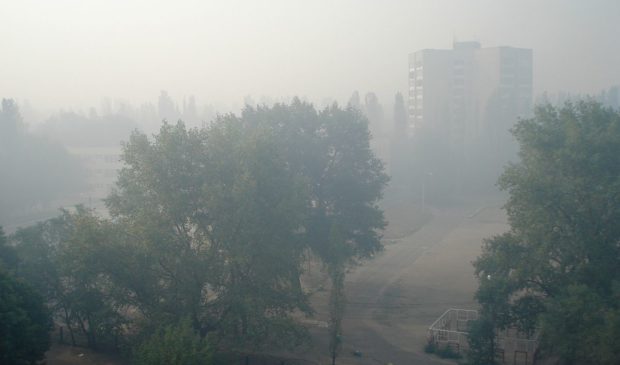City partners up to monitor particulate matter in the air
Monday, December 13, 2021 by
Willow Higgins Austin has begun working to better monitor the quality of its air. The Clean Air Force of Central Texas is working in partnership with the city of Austin’s Office of Sustainability and the Austin Independent School District to install PurpleAir monitors – a low-cost device that measures particulate matter in the air – in public schools across town as part of the Regional Air Quality Plan.
Particulate matter, inhalable particles of pollution less than 2.5 micrometers in size, can be caused by combustion, dust and smoke. City Council had previously committed to reduce ground-level ozone in the air, along with the five other counties that have committed to the Regional Air Quality Plan. Austin recently adopted a measure to include particulate matter monitoring as a part of that effort.
The partnership has chosen to install PurpleAir monitors at about 10 public schools across the city; the Environmental Protection Agency has deemed PurpleAir devices a fairly accurate and more affordable option to monitor particulate matter, as compared to regulatory sensors – which measure all criteria pollutants – which the city already has a few of but come at a quite higher price point. Both the PurpleAir monitors and the regulatory sensors will work in tandem to create a localized network that will allow the city to identify changes in air quality neighborhood by neighborhood.
“Cities like London, Oakland and Houston have all done localized air monitoring networks, and … and they’re starting to see that depending on what part of the city you are, there’s an equity issue with air pollution,” Phoebe Romero, an environmental program coordinator at the Office of Sustainability, told the Austin Monitor. “And so there’s value in having a more close geographic picture.”
The Clean Air Force of Central Texas, which purchased AISD seven of its 10 PurpleAir monitors, also worked with a university to create a curriculum that will allow students to study the air monitoring process and results. The Clean Air Force is working to get the curriculum up to Texas education standards and to tailor it to various grade levels in elementary and middle school.
“So the idea is that if a school has (a PurpleAir monitor) installed, the science teachers can (have) curriculum so … the students can learn about air quality, air pollution, but also a little bit about what air monitoring is,” Romero said.
While filters have been installed at select schools over the past couple of months, if all goes well, the city hopes to expand its network of monitors. To pick the locations of the preliminary schools and offer suggestions for eligible locations to install future monitors, the team looked at an abundance of factors, like proximity to existing regulatory sensors, proximity to major highways or arterial roads, social vulnerability, schools with a historic interest in green initiatives, asthma rates, Title I funding and the canopy cover of the campus.
The University of Texas already has a congregation of quite a few PurpleAir monitors, as a professor started a similar initiative years ago. The city and AISD plan to lean on UT to best decide how to expand the program. Because UT already has several monitors and students studying the data, and PurpleAir provides a publicly available map of the locations and some of the data from their monitors, Austin already has a leg up on the project.
Romero explained that this data, whether it be coming from AISD schools, the UT campus or other locations across the city, will help them not only understand equity issues in air quality but also how different industries or activities impact quality so that they can work to prevent any environmental damage.
“In a city like Austin where we just passed this huge Project Connect transportation bond, it’ll be interesting to be able to have this network before-and-after to better understand the impact of air quality of some of these interventions as they move forward,” Romero said. “There might also be other industries that are reporting to the EPA … but maybe we don’t understand what their impact in the local neighborhood is, right? And so it’s better to be taking a look at where air pollution might be coming from that we have a blind spot in, and then taking any action that we can mitigate that.”
Since the project is just getting off the ground, the Office of Sustainability has yet to see any of the data the PurpleAir monitors are acquiring, but are hoping to have an evaluation by the first quarter of 2022.
Photo by Timur Mamedrzaev, CC BY-SA 3.0, via Wikimedia Commons.
The Austin Monitor’s work is made possible by donations from the community. Though our reporting covers donors from time to time, we are careful to keep business and editorial efforts separate while maintaining transparency. A complete list of donors is available here, and our code of ethics is explained here.
You're a community leader
And we’re honored you look to us for serious, in-depth news. You know a strong community needs local and dedicated watchdog reporting. We’re here for you and that won’t change. Now will you take the powerful next step and support our nonprofit news organization?




